The national holiday celebrating children and families
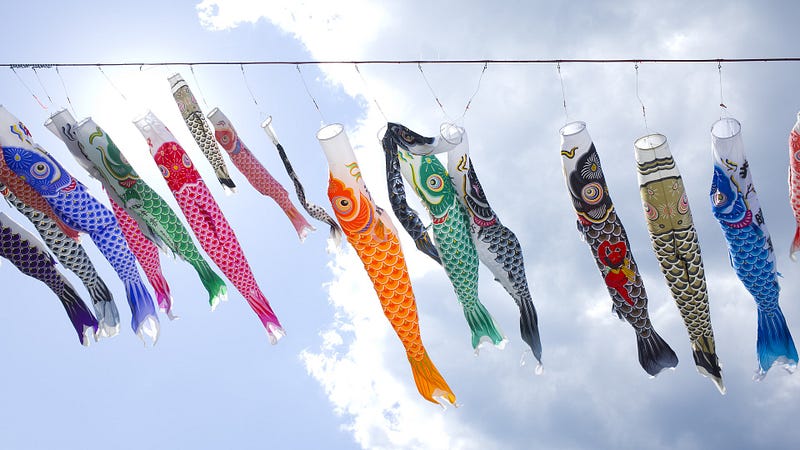
May 5th is Children’s Day in Japan, a national holiday with a long and amazing history.
The Five Festivals
Children’s Day is one of the five seasonal festivals, or go-sekku, brought to Japan from China in the 8th century. These five festivals marked the change of seasons and were days set aside to prepare for the coming months through purification, prayers, and banishment of misfortune. Still celebrated in Japan, they occur on odd-numbered days:
- 1/1 was eclipsed by New Year’s celebrations, so the seasonal holiday was moved to 1/7. It is called Jin-jitsu, Human Day, or Nanakusa-no-sekku, Seven Herbs Day, and is when a purifying rice gruel is eaten.
- 3/3 Hina Matsuri, Girls’ Day
- 5/5 Tango-no-sekku, formerly Boys’ Day, now Children’s Day
- 7/7 Tanabata, The Star Festival
- 9/9 Kiku-no-sekku, The Chrysanthemum Festival
Precursors of Children’s Day
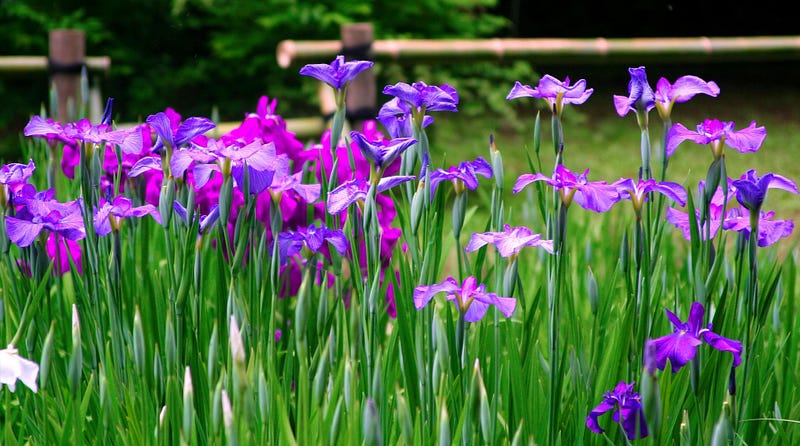
Children’s Day finds its antecedent in the Iris Festival, Shōbu-no-sekku, also called Tango-no-sekku.
In ancient China, the fifth lunar month was considered unlucky, especially the 5th day, which was called “Double Fifth.” On that day, people hung iris plants, mugwort, and garlic above the entranceways to their houses, believing that these plants would ward off natural disasters, illnesses, and evil spirits.
Centuries later, this custom was carried to Japan and came to include prayers for the upcoming rice planting season. Like the Chinese, the Japanese decorated their eaves with irises and mugwort to ward off misfortune.
As the years passed, new customs were added. People put iris leaves under their pillows to drive away evil and added finely chopped iris leaves to their sake.
Young girls would bathe in water with iris petals for purification. These girls, known as sa-otome, were central to Ta no Kami, or rice field god, festivals held on the day when the rice seedlings were transplanted into the flooded paddies.
These varied forms of purification are still practiced in some households today. Many onsens, or hot springs, across the country offer special Shōbu-no-yu baths with iris leaves on May 5th.
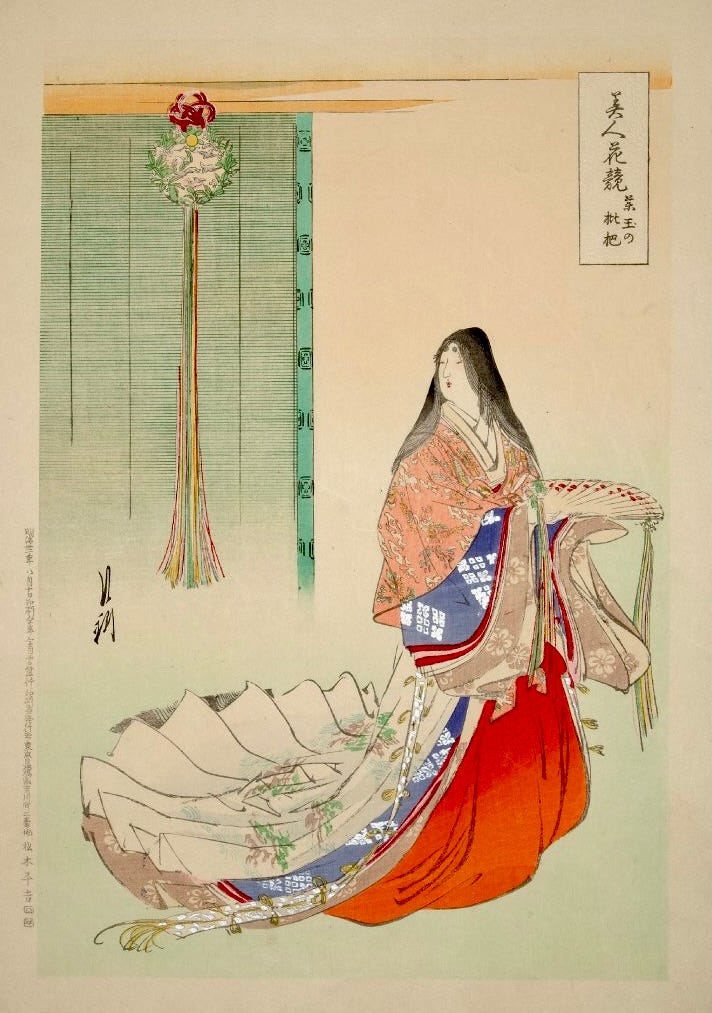
At the ancient imperial court in Nara, aristocratic women wore iris hair ornaments to a grand ceremony in the palace where the emperor would bestow a fragrant kusu-dama upon his vassals. This was an ornamental ball filled with medicinal herbs that opened in half when a string was pulled, dropping its contents. The herbs were for purification and to cast out evil spirits.
Samurai culture gives birth to Boys’ Day
Under the samurai rulers of the Kamakura era (1185–1333), the Iris Festival became Boys’ Day. Samurai focused on raising strong boys to become courageous warriors who would continue their family lines.
The word for iris, shōbu 菖蒲 is pronounced the same as shōbu 尚武, meaning valiant or warlike. That, and the fact that the hanging iris leaves resemble swords, is thought to have played a part in the change.
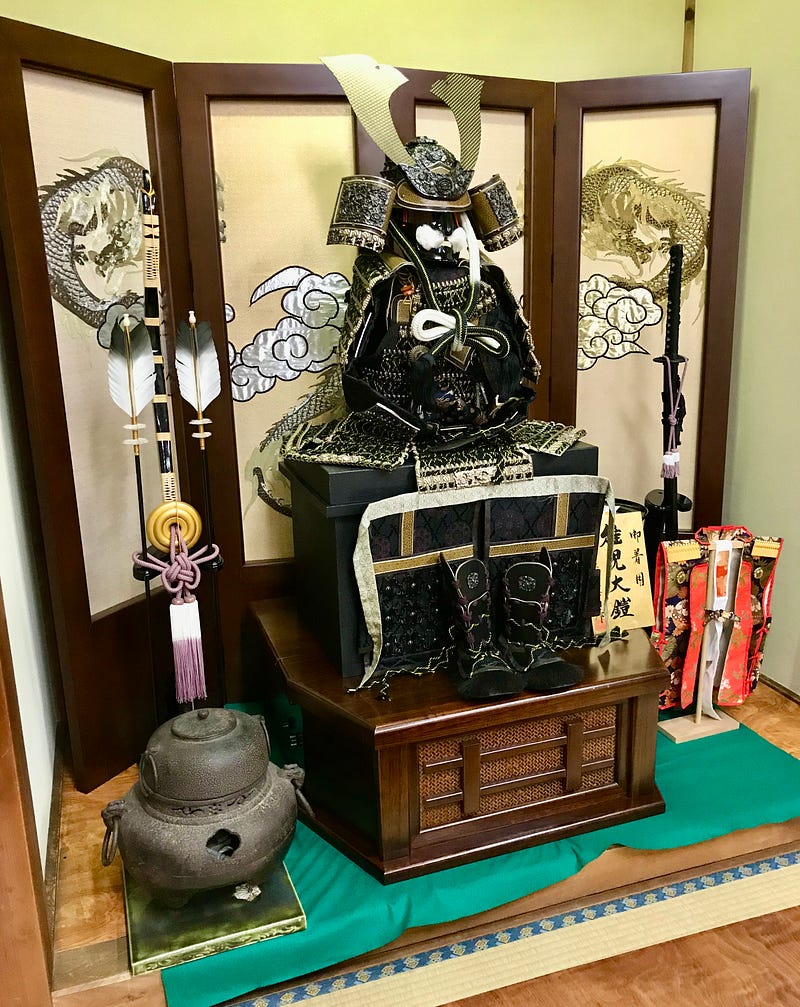
Families visited shrines and gave offerings of armor, praying for the health and prosperity of all their sons, but most particularly, their heirs.
People began to decorate their houses with small displays of armor, helmets, swords, and arrows, symbolizing protection for their boys’ health. This custom continues to this day.
Carp streamers
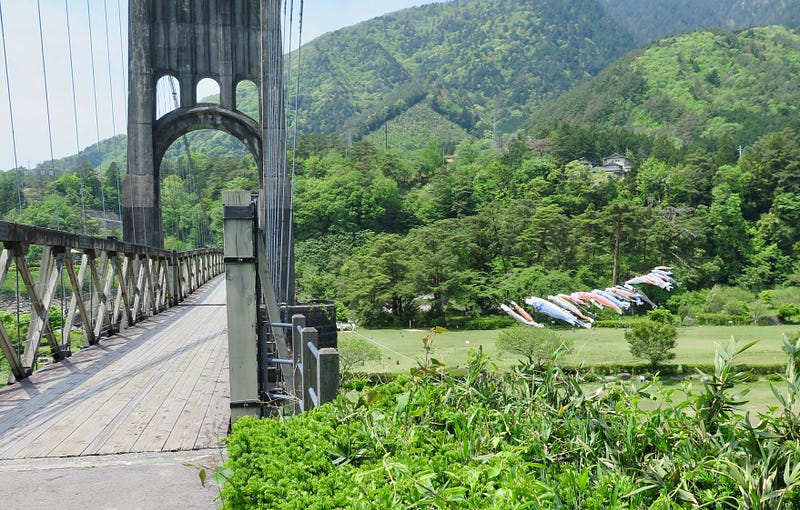
During the Edo era (1603–1867), the practice of hanging koi-nobori, or windsock-like carp streamers, one for each boy in the family, began among the townspeople of Edo (Tokyo).
Filled with strength, vitality, and adaptability, carp can survive in clear streams and muddy, in marshes and in lakes. They can persevere and struggle to swim upstream and even climb waterfalls. Koi-nobori streamers are hung with the prayer that a family’s sons will grow to be hardy, adaptable, and strong, like carp.
On the riverbanks of Edo, yet another custom began. Ishi-gasen, or stone-throwing fights, and it is exactly what it sounds like. This custom resulted in some serious injuries and even deaths among the young participants, so thankfully, the shogun soon outlawed it.
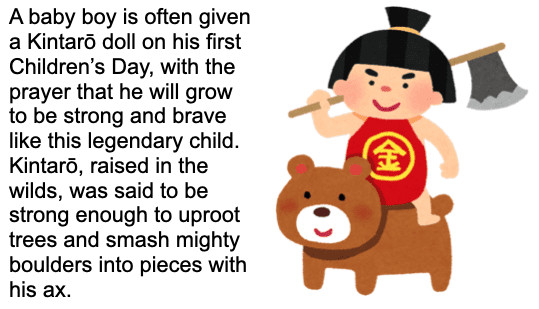
Children’s Day
In 1948, Boys’ Days was changed to Children’s Day and was christened as a day to celebrate not just children but to honor the family unit. In contrast to Girls’ Day on March 3, Children’s Day is a national holiday.
Celebratory Food
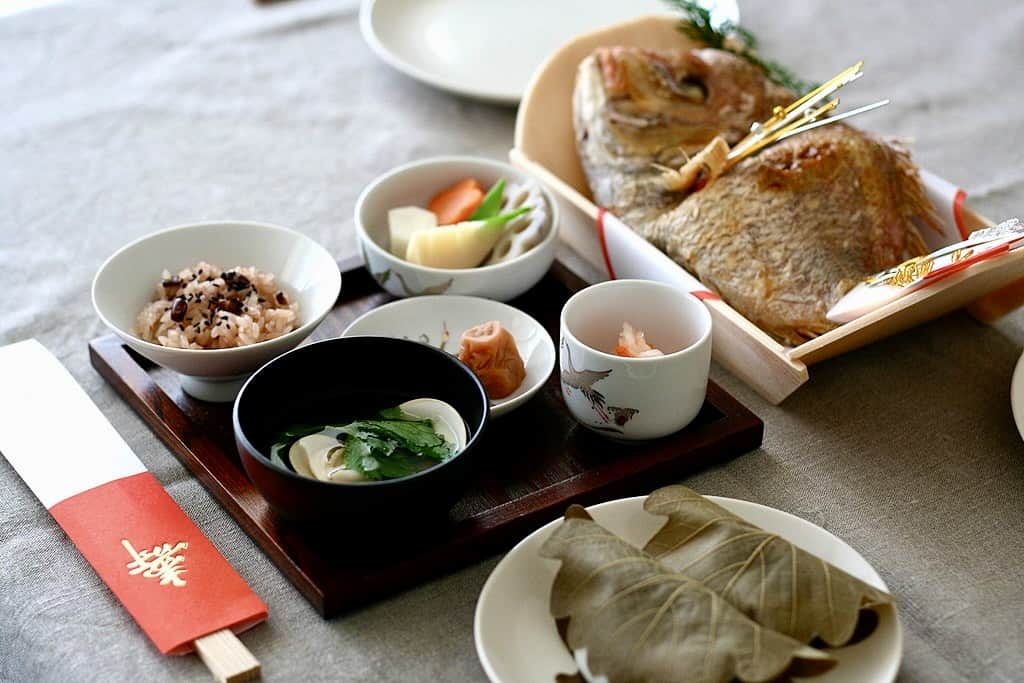
Grandparents and families gather on Children’s Day to eat a special meal, often featuring carp, rice cooked with adzuki beans, and seasonal vegetables.
Children’s day is known for two special types of sweets. Chimaki are rice dumplings wrapped in bamboo leaves, chi signifying cleverness. Kashiwa-mochi are sticky rice cakes — soft yet chewy — filled with sweet red bean paste wrapped in oak leaves. Oak leaves symbolize force, manliness, and endurance.

References:
図説民俗探訪事典 compiled by 大島 暁雄, http://www.ningyo-kyokai.or.jp/sekku/tango.html, https://www.nytimes.com/1991/05/01/garden/for-children-s-day-sweets-of-course.html, and more.
If you have questions about Japan or suggestions for articles, please add them in the comments. For more photos and information on Japan, follow me on instagram at: https://www.instagram.com/more_than_tokyo/




